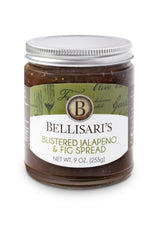Let Them Eat Flowers!
We have had a lot of rain lately here in Columbus, but instead of letting it get us down, let’s look at the silver lining in this particular gray cloud. All of this rain is making for a beautiful blooming season. Spring blossoms are now giving way to summer, but to me it’s just as spectacular. However, being a foodie and someone who is always trying to grow my culinary expertise, I tend to look at flowers a bit differently than most. As in -- can I eat those? You might be surprised at how often the answer to that is a resounding, “YES!”
For most, it’s not a huge leap to eat the flowers of plants that we already are accustomed to eating. For example, chives. Chives, as an herb, is fairly common, right? Sour cream and chives are so usual, you can get them at fast food places that serve baked potatoes. But that’s the green part. What about the gorgeous purple flowers that come if you let your chives grow? Those are edible too -- and yummy! I love to whip up a dish of chive blossom butter -- chives, chive blossoms, butter, and salt -- for bagels or scones when serving brunch or an afternoon tea. Decorated with whole chive flowers, this is always a crowd pleaser.
Since spreads and sauces are kind of “my thing,” I enjoy finding tasty botanicals that blend well with soft cheeses and sauce bases, but for flowers that are completely edible, it’s nice to use the whole blossom as a garnish you can also eat. I often sprinkle whole edible flowers on a charcuterie board or to top a cocktail, if the flavor and appearance fits the bill. Different blooms have very distinctive flavors. For instance, nasturtiums, really gorgeous flowers, have a slightly peppery taste, almost like watercress, working well in delicate salads and wraps, and while roses have a strong floral scent, their flavor is quite subtle and fruity. Roses lend themselves well to everything from soups and salads to teas, jams and desserts.
When using flowers that are meant to be eaten, be sure to avoid using botanicals that have been sprayed with pesticides or other chemicals. Always purchase your edible flowers from the produce section of your grocery store or from reputable online sources. When cooking with or serving edible flowers, clean them by washing them gently in a large bowl of cold water and letting them air dry on a paper towel. Use them immediately or store them in the refrigerator for up to a week in an airtight container lined with a damp paper towel.
Remember, not ALL flowers are edible. In fact, some can make you very ill if consumed. To be safe, refer to a list like this one for your floral eating questions: https://www.gardeningchannel.com/list-of-edible-flowers-a-z/. All of us at Bellisari’s are wishing you a delicious and beautiful summer!







